The total volume of livestock production in Cagayan Valley was registered at 59,286 metric tons, liveweight. This indicates an annual growth of 2.5 percent from the 57,834 metric tons, liveweight output in 2023. (Figure 1)
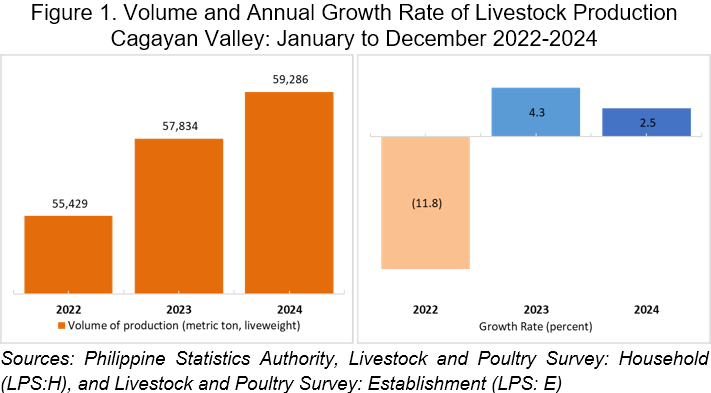
Among the different livestock types, goat production exhibited the highest uptick of 4.4 percent, from 1,385 metric tons, liveweight in 2023 to 1,446 metric tons in 2024. Hog production also displayed a slight upsurge of 3.8 percent, reaching 36,799 metric tons, liveweight from 35,442 metric tons, liveweight previous year. In addition, carabao production increased slightly by 0.4 percent, with an output of 8,148 metric tons, liveweight. Carabao production remained steady with a total output of 12,894 metric tons in 2024. (Figure 2)
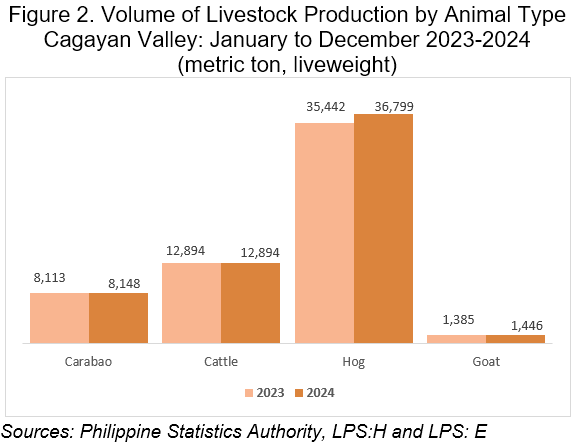
In 2024, Cagayan province remained the leading contributor to the region’s livestock production, accounting for 59.1 percent of the region’s total carabao production (4,813 metric tons, liveweight), 49.6 percent of the regional hog production (18,254 metric tons, liveweight), and 44.5 percent of the total goat production (643 metric tons, liveweight). Meanwhile, Isabela led in cattle production, contributing to 70.0 percent of the regional output, equivalent to 9,025 metric tons, liveweight. (Figure 3)
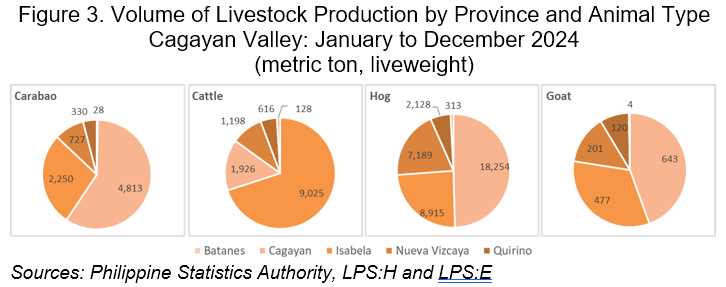
As of January 1, 2025, the total carabao inventory in Cagayan Valley was 260,281 heads, reflecting a 0.7 percent decrease from 207,709 heads in the previous year. Of this total, smallhold farms accounted for 99.3 percent, while the remaining 0.4 percent and 0.3 percent were from semi-commercial farms and commercial farms, respectively.
The cattle inventory beginning 1 January 2025 declined by 4.4 percent, dropping from 167,095 heads in 2023 to 159,660 heads in 2024. Smallhold farms comprised 76.2 percent, semi-commercial farms 20.8 percent, and commercial farms 3.0 percent.
As of 1 January 2025, the region’s total swine inventory was noted at 195,558 heads. This was 21.2 percent higher from its previous year’s same period count of 161,391 heads. About 97.0 percent of the region’s swine population came from smallhold farms, while the remaining 2.3 percent and 0.7 percent were from commercial and semi-commercial farms, respectively.
Meanwhile, goat's latest inventory as of January 1, 2025 increased by 4.9 percent, reaching 101,936 heads compared to 97,180 heads in 2023, with 98.9 percent raised in smallhold farms while the remaining 0.8 percent and 0.3 percent were from commercial farms and semi-commercial farms, respectively. (Table 1)
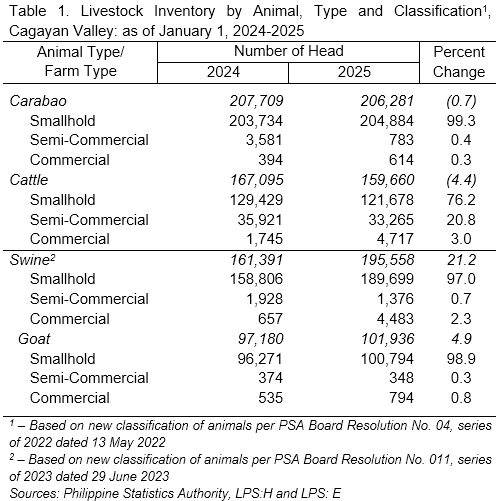
All livestock commodities recorded increments in the number of slaughtered in slaughterhouses during 2024. Goats notably recorded an increment, with an increase from 82 heads in 2023 to 142 heads in 2024, marking a rise of 79.3 percent. Moreover, the number of hogs, cattle and goat slaughtered in 2024 also exhibited growths of 7.5 percent, 6.9 percent and 4.7 percent, respectively as compared to 2023 (Figure 4).
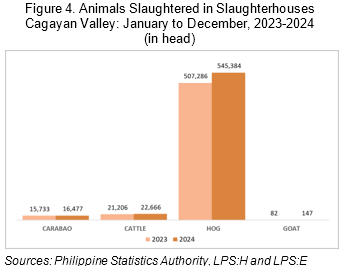
Farmgate prices varied across the region, influenced by market demand and production costs. In household farms, the average farmgate prices per kilogram (live weight) in 2024 were Php 160.11 for carabao (up by 10.5%), Php 176.25 for cattle (up by 8.6%), Php 260.86 for goat (up by 15.4%), and Php 174.56 for hog (up by 4.7%). The highest farmgate prices were recorded in April for carabao, December for cattle, May for goat, and June for hogs (Table 2).
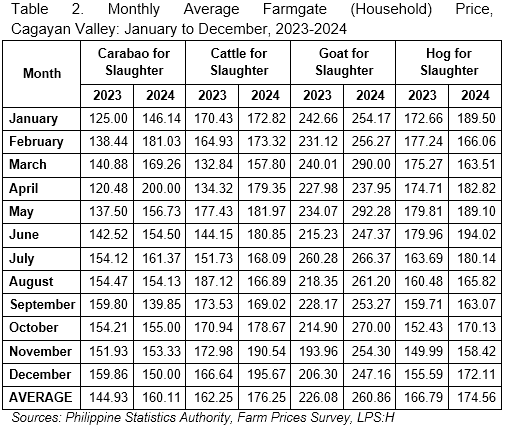
For establishments, the average farmgate prices per kilogram (liveweight) in 2024 were Php 157.09 for carabao (up by 9.6%), Php 159.36 for cattle (up by 7.5%), Php 259.64 for goat (down by 7.3%), and Php 176.30 for hog (up by 7.2%). The highest prices were observed in September for carabao, December for cattle, January for goat, and June for hog (Table 3).
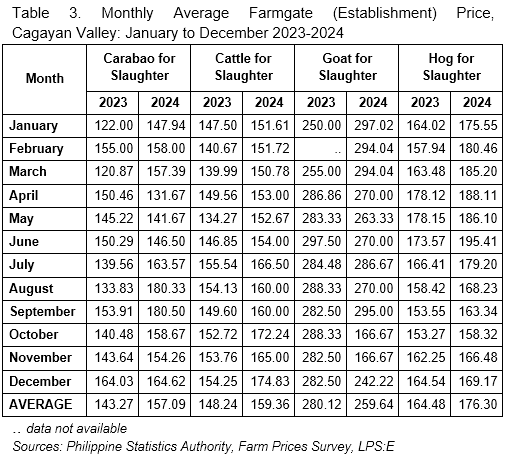
ENGR. GIRME M. BAYUCAN
(Chief Statistical Specialist)
Officer-in-Charge, PSA RSSO II
//EMDP/MLLP/EKRG
